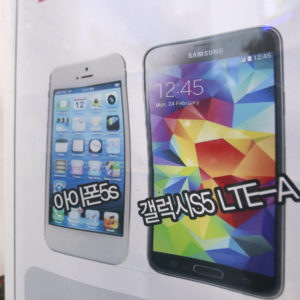The U.S. Supreme Court furthered a legal dispute last year as it sent a patent law case involving the two biggest smartphone makers, Apple and Samsung, back to lower courts. Intellectual property experts are now looking to those courts to better define an “article of manufacture” and determine how to place value on individual features in a complex device.
Apple and Samsung have been in a heated battle since 2011 over whether Samsung infringed on Apple’s iPhone design patents. The U.S. Circuit Court of Appeals previously ordered Samsung to pay the total profit on Galaxy smartphones that used elements like rounded corners and similar icon design, for which Apple claimed patents. The ruling was based on a 19th century law. The dispute eventually went to the highest court, which threw out the previous ruling. The justices unanimously decided Dec. 6 to return the case to the federal circuit courts to define the article of manufacture standard.
The Computer and Communications Industry Association on Wednesday hosted a panel of legal experts to explore possible solutions. The Northern District Court of California is now responsible for developing a test to determine what defines an “article of manufacture.” Apple, Samsung, and other interested parties have proposed possible tests.
“The [Supreme Court] decision was Solomon-like in that it left neither side particularly happy,” Howard Hogan, a partner at the law firm Gibson, Dunn & Crutcher, said during the panel. “The problem with a Solomon-like decision, baby-splitting, is it is often designed to keep neither side happy. Now the lower courts are trying to follow the Supreme Court’s guidance in devising a test.”
The test for determining whether a product violates design patents will have a substantial impact on the technology industry, which has led many leading tech companies to voice support for Samsung in the case. A well-defined test with specific requirements could help protect intellectual property while promoting competition. A test that isn’t well defined increases the chances of abuse from larger software companies and patent trolls.
The experts on the panel expressed that there is much at stake, and the case will have an impact well beyond big tech companies.
“There’s a temptation to think that patents are sort of this weird, obscure area that technology companies and pharmaceutical companies are involved in, but who else has to worry about it?” asked Charles Duan, director of the Patent Reform Project for Public Knowledge, a consumer advocacy group. “It turns out that when you start to look at some of the patents that are coming out there, you’ve got phone patents – everybody has a phone. You’ve got patents on tractors – if there’s anybody that embodies American individualism, it’s farmers. And yet they’re stuck dealing with intellectual property. You have a lot of these sorts of examples of patents really starting to affect much more general consumer-level things.”
Apple and other companies could use a poorly defined test to go after competitors even if their product is completely different. A product could be subject to a legal dispute even when the products are entirely unrelated but a similar patented component allows for costly litigation. Patent trolls could use the vagueness of the test to extract money from companies that can’t afford an expensive court battle.
The Northern District of California is responsible for designing the test for what defines an article of manufacture and then determine how to value an article of manufacture relative to the whole product. A key question will likely be whether the component being patented is critical to why people want to buy the product.
The long-running case is unlikely to be resolved soon. The decision in California’s Northern District is likely to face several rounds of appeals.

